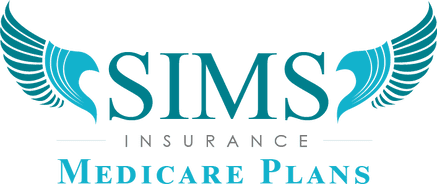Medicare Advantage is a popular alternative to Original Medicare offered by private health insurance companies. Over 28 million Medicare beneficiaries are enrolled in Medicare Advantage Plans in 2022. But there is some confusion around whether Medicare Advantage involves any financial risk for insurers. Is Medicare Advantage a risk-based model? Let’s take a closer look.
What is Medicare Advantage?
Medicare Advantage, also known as Medicare Part C, allows private insurers to provide Medicare benefits to beneficiaries who enroll in their plans. These plans must cover all services covered by Original Medicare but can also offer extra benefits not included in Parts A and B. Most Medicare Advantage Plans also provide prescription drug coverage under Part D.
Medicare pays Medicare Advantage Plans a monthly capitated rate per enrolled member to provide this coverage. The insurers agree to cover all Part A and B services in exchange for receiving this fixed monthly payment from Medicare.
How Medicare Advantage Plans Are Paid
Medicare Advantage Plan payments are determined through a bidding process:
- Plans submit a bid amount representing the estimated cost to provide Medicare Parts A and B coverage.
- The bid is compared to Medicare’s benchmark rate for that region.
- If the bid is lower than the benchmark, the plan and Medicare split those savings as rebates.
- The final payment rate is tied to the plan’s quality ratings. Higher-rated plans get bonuses added to their rates.
This bid process aims to make payments more reflective of the average cost to treat beneficiaries in that area.
Is Medicare Advantage Risk Adjustment Based?
Yes, Medicare Advantage involves financial risk for participating private insurers. Here’s why it is considered a high-risk model:
- Plans receive fixed monthly payments per member, regardless of how much care each enrollee uses.
- They are responsible for covering all Medicare services, even if medical costs exceed the payments.
- Plans must pay providers themselves for any services rendered. Medicare does not pay individual claims.
- If a member has higher healthcare needs and expenses, the plan must cover it from their fixed budget.
This means the insurers take on the risk that medical expenses could outpace the payments received from Medicare. They must manage enrollee costs within the fixed monthly amounts allotted.
Medicare Advantage is therefore a form of capitation, meaning providers take on the risk of potential losses but also gain from potential savings. This incentivizes plans to efficiently coordinate care.
Managing Risk with Medicare Advantage
To be successful with Medicare Advantage, insurers carefully manage their risk exposure using various strategies:
- Actuarial analysis to accurately set competitive bid amounts
- Care coordination and preventive care to control expensive services
- Utilization review protocols to avoid unnecessary spending
- Quality bonus payments rewarding efficient, high-value care
- Medicare Advantage risk adjustment to account for health status when determining payments
- Reinsurance purchased to limit losses from high-cost cases
When costs are managed well, plans can achieve savings and retain a percentage as profit. But they also risk financial losses if expenses exceed payments.
Risk Adjustment coding in Medicare Advantage
An important component of balancing risk in Medicare Advantage is CMS’ risk adjustment model. Risk scores are calculated for each member based on documented diagnoses. Higher risk scores result in increased payments to the plan.
Accurately coding all diagnoses through robust chart review and data collection is crucial for plans. Medicare Advantage Plans undergo risk adjustment data validation audits by CMS to verify accuracy as this heavily impacts payment.
Is Risk-Based Medicare Advantage Beneficial?
Proponents argue risk-based models like Medicare Advantage encourage more coordinated, efficient care delivery with tighter utilization controls. But critics contend it could incentivize plans to avoid higher-risk patients who are costlier to cover.
However, risk adjustment mechanisms aim to compensate plans appropriately based on patient health status. And Medicare Advantage Plans overall continue to grow in popularity for offering expanded benefits versus Original Medicare.
For providers, taking on risk requires significant investments in care management and data analytics. Vertically integrated health systems often have strengths in these areas to succeed under risk-based Medicare Advantage contracts.
Key Takeaways on Medicare Advantage Risk
- Medicare Advantage involves financial risk for insurers who agree to cover all Part A and B benefits for fixed monthly payments.
- Plans must manage costs within the payments received, which are based on competitive bidding.
- Risk adjustment and quality bonuses aim to tie payments to health status and performance.
- Providers need strong capabilities in care coordination, utilization management, analytics, and coding to bear risk successfully.
- While challenging, risk-based models can incentivize more efficient healthcare delivery if executed thoughtfully.
Medicare Advantage’s capitated structure means insurers take on material financial risk. Balancing this risk while meeting quality standards takes sophisticated population health management. But risk-based models are pushing the industry toward greater accountability and integrated care.
We’re Here to Help
You do not have to spend hours reading articles on the internet to get answers to your Medicare questions. Give Scott Sims at Sims Insurance Medicare Plans a Call at (541) 915-0939. You will get the answers you seek in a matter of minutes, with no pressure and no sales pitch. We are truly here to help.
FAQs
What is the goal of risk adjustment in Medicare Advantage?
The goal of risk adjustment in Medicare Advantage Plans is to help ensure these private health plans are paid appropriately based on the overall health risks and care needs of their member populations compared to the traditional Medicare program. It aims to account for the cost of providing care to beneficiaries with predictably higher medical expenses.
How do risk-based payment models in Medicare Advantage work to achieve this goal?
Risk-based payment models in Medicare Advantage tie a portion of payments to plans’ ability to treat beneficiaries with demonstrated higher health risks through use of risk adjustment tools like the Hierarchical Condition Category risk adjustment model. Plans taking on higher levels of risk for their populations receive higher payments to help cover increased medical costs.
What types of organizations often benefit from participating in risk-based Medicare Advantage programs?
Vertically integrated health plans, hospitals, and provider-sponsored Medicare Advantage organizations can benefit from participating in risk-based Medicare Advantage programs that emphasize care management and keeping beneficiaries healthy. These programs better enable capturing of complete and accurate diagnosis codes tied to members’ conditions and health risks.
How do risk adjustment data validation (RADV) audits work to ensure appropriate payments in Medicare Advantage?
The Centers for Medicare and Medicaid Services conduct regular post-payment risk adjustment data validation (RADV) audits of Medicare Advantage Plans. They involve reviewing medical records to verify diagnosis codes used in the risk adjustment process match documented member health conditions. This helps ensure plans receive proper payment levels based on their member populations’ true health statuses and needs.
What types of initiatives do health systems employ to take on more risk through Medicare Advantage programs?
Health systems are investing in initiatives like comprehensive care management programs, population health analytics using clinical data, advanced primary care models, and tight integration with affiliated health plans and providers. These strategies aim to better predict, treat, and document conditions to request appropriate risk adjustment payments through Medicare Advantage programs.
What key trends have incentivized health systems to take on greater levels of risk in the healthcare market?
Reimbursement shifts away from fee-for-service toward value-based payment, growing pressures to control total cost of care, and rising consumerism have led many health systems to gravitate toward risk-based Medicare Advantage programs and other alternative payment models that better facilitate population health approaches and provider risk-taking.
How important is accurate risk coding for healthcare organizations participating in these alternative payment models?
Obtaining complete and compliant risk coding directly impacts revenue for organizations in risk-based Medicare Advantage programs and other risk-bearing alternative payment models. With accurate risk scores comes appropriate adjustment of prospective payments to cover costs of providing care for members with higher needs. Coding directly influences financial sustainability under these models.
What best practices do experts recommend for health systems looking to advance into risk-based Medicare Advantage payment arrangements?
Key recommendations include standing up robust care management programs, investing in risk adjustment expertise, strengthening clinical documentation and coding, forging payer-provider partnerships, population segmentation, and measuring and reducing preventable acute and chronic complications that drive up costs of care for higher-risk beneficiaries.
How do provider partnerships with health plans benefit participation in value-based programs like risk-based Medicare Advantage?
Partnering closely with health plans provides opportunities for data and resource sharing, joint care coordination, and alignment on financial and care delivery goals. This collaboration facilitates acceptance of two-sided risk where providers and plans jointly share in savings or losses depending on population health outcomes and per-member costs compared to targets.
What percentage of Guidehouse’s Fall 2021 survey respondents said strategic provider-payer partnerships were important for succeeding under risk-based models?
91% of health system and payer executives surveyed in Guidehouse’s Fall 2021 clinical integration summit said strategic partnerships were important or very important for success under risk-based models like risk-based Medicare Advantage, up from 81% in 2019. Close collaboration aids in gaining experience managing financial risk.


